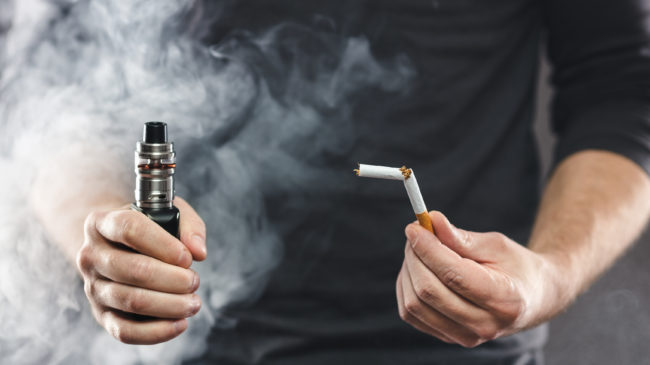Before the COVID-19 pandemic, one of the most heated debates in public health was over the role of e-cigarettes in helping smokers kick their habit. Supporters argued millions of Americans had quit smoking thanks to e-cigarettes, which have been conclusively proven to be substantially safer than cigarettes. Skeptics, however, countered that while vaping may be safer than smoking, the number of young people vaping more than offset the benefits from adults switching from traditional cigarettes to vaping.
Montana enacted a 120-day ban on flavored vaping products that ended in April. Now, Montana’s Department of Public Health and Human Services is pushing to permanently ban e-cigarette flavors in the state.
The message from the state health department is clear. It claims that since e-cigarettes are popular among youth, they must increase the chances of kids smoking so fruity flavors are to blame. Adult vapers, DPHHS asserts, do not need access to these e-cigarette flavors to keep them away from cigarettes.
On closer inspection, DPHHS’s case more policy-based evidence than evidence-based policy. The state health department cites a report by the National Academies of Sciences Engineering and Medicine (NASEM), saying the study shows there is substantial evidence that vaping increases the risk of youth trying cigarettes. But Dr. Nancy A. Rigotti of Harvard Medical School, who was on the committee for the NASEM review, said this part of the report is often misinterpreted.
“What we are not actually saying here is that it (vaping) leads to young youth smoking, something that has been sometimes lost in translation,” said Rigotti. She clarified that there is an “enormous amount of ecological data,” showing that as youth vaping increases, cigarette smoking decreases, making it “hard to argue that there is a gateway there.”
DPHHS claims fruity and sweet e-cigarette flavors are why an increasing number of kids have tried vaping. But according to a survey of teens by the Centers for Disease Control and Prevention (CDC), curiosity is by far the most popular reason kids try e-cigarettes, with the second being able to do vape tricks.
According to the Youth Risk Behavior Surveillance System for 2019, just 7% of Montana students said flavors were the main reason they used an e-cigarette. Almost 48% of students gave reasons other than flavors, and 45.2% said they had never used an e-cigarette in the first place.
Some might ask, even if flavors aren’t the driver of youth vaping, what is the harm in banning them if tobacco alternatives are available?
According to a Yale University study examining the role of e-cigarette flavors in subsequent smoking initiation and quitting by both youth and adults, e-cigarette flavors were associated with positive cessation outcomes for adults but were not associated with increased youth smoking. Another Yale study examining the impact of various potential tobacco flavor ban scenarios found that “a ban on flavored e-cigarettes alone would likely increase the choice of cigarettes in smokers, arguably the more harmful way of obtaining nicotine” and could worsen public health by “driving smokers to alternative products.”
Last year, San Francisco banned the sale of flavored tobacco products — and the results are not promising. Research in “Addiction Behavior Reports” found that after the city’s flavor ban was introduced, there was a significant increase in smoking among the 18-24 age group.
The public health consequences of flavor prohibition are bad enough, but there’s also the impact on small businesses. According to an analysis conducted by John Dunham Associates, vape shops in Montana directly employed 313 people in 2018, paying nearly $9.4 million in wages and generating $20 million in economic activity that year. According to John Dunham Associates, around 50 vapor-focused businesses would be closed if Montana bans e-cigarette flavors.
Thus, a ban on flavored e-cigarettes would shutter Montana businesses and risk driving adults and young people to more harmful cigarettes. In that scenario, the only winner in Montana’s push to ban vaping flavors would be the traditional cigarette, which would get more customers thanks to an agency dedicated to public health.
A version of this column previously appeared in The Missoulian.

